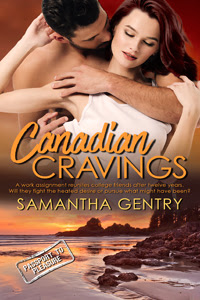New Year's resolutions have basically become an annual joke. Every first of January we make resolutions for the upcoming year and if we're lucky, they remain valid for the rest of the month. In fact, just a couple of days ago I saw something on television about the life span of a New Year's resolution being as short as one week.
So, this year how about making some resolutions you'll actually be able to keep during 2025? Here's a list of several such resolutions. I hope you accept these suggestions in the spirit of humor in which they are offered. If I've offended anyone, it wasn't my intention, and I apologize in advance.
1. Gain Weight. Let's face it, you already have a start on this one with all the holiday meals, candy, beverages, and snacks starting with Thanksgiving (maybe even starting with Halloween candy) and continuing on through Christmas and New Years.
2. Go Deeper Into Debt. You probably have a head start on this one, too, from holiday gift shopping. After all, even buying new things for yourself…well, it was probably stuff you needed and with all the great sales this year who could resist?
3. Spend More Money. This goes hand-in-hand with the second item on the list. Spend it now while you're still physically able to get out to do it. And now, with the proliferation of on-line shopping, bad weather and not being able to get out doesn't keep you from buying things.
4. Don't Get A Better Job. Since having any job is better than not having one, be happy with status quo.
5. Whatever Shape You're In Is Fine. Seriously…round is a perfectly acceptable shape.
6. Don't Go Back To School. Look at your current life and time schedule. Now add a part time college schedule to that plus the cost of tuition for just one semester (probably the same amount as that new curved 85-inch 4D HDTV home theater with Dolby Surround Sound you bought in item two on the list) and the cost of expensive college textbooks and other fees. Hmmm…a fine bottle of rare vintage wine or a bottle of aged single malt scotch vs. Concepts of Economics Vol. 1.
7. Drink More Alcohol. Open that fine bottle of wine or scotch and watch your new 85-inch TV.
8. Smoke Like A Chimney. When someone chastises you for putting second hand smoke out there, ask them if they've traded in their gas-guzzling car for a electric vehicle or a bicycle.
9. Stay At Home for your vacation. If, however, you prefer to find toilet paper that's hard enough to scrape paint, really weird television, and even weirder food…then travel out of the country.
And last but not least…
10. Don't Volunteer!
And now for something completely different (with apologies to Monty Python for stealing…uh, I mean borrowing…their catch phrase).
As a follow up to Christmas, a few words about that much
maligned holiday treat, the butt of so many jokes, that humble yet seemingly
inedible concoction—fruitcake.
Food historians theorize that fruitcake (any cake in which dried fruits and nuts try to coexist with cake batter) is older than Moses. Ancient Egyptians entombed fruitcake and Romans carried it into battle, probably for the same reason. Fruitcake was built to last and it did, well into medieval times.
It was in the 18th century that fruitcake achieved totemic status. At that time nut-harvesting farmers encased fruits and nuts in a cakelike substance to save for the next harvest as a sort of good luck charm.
And thus the problem. Any cake that is not meant to be eaten doesn't deserve to be classified as food.
Our love/hate relationship with fruitcake began in the early 20th century when the first mail-order fruitcakes became fashionable gifts. It ended up as a mass-produced product using barely recognizable fruits and packed into cans as heavy as barbell weights.
And another something different…
While celebrating the arrival of the New Year, there's one
thing you should keep in mind—the darker the liquor, the bigger the
hangover. According to a new study that
compares the after effects of drinking bourbon vs. vodka, what sounds like an
old wives' tale is true…to a point.
Brownish colored spirits such as whiskey and rum contain greater amounts of congeners than clear liquors such as vodka and gin. And what are congeners, you might ask? They are substances that occur naturally or are added to alcohol during the production and aging process, many of which are toxic. They contribute to the alcohol's color, odor, and taste. They also interfere with cell function, and I'm NOT talking about your mobile phone. :) And they viciously punish your head and tummy the next morning. According to the study, bourbon is aged in oak barrels and has thirty-seven times as many congeners as vodka, which is heavily filtered to remove impurities.
Drinking in the study was relatively moderate compared to some New Year's Eve binges. The average blood-alcohol content of the survey participants was 0.1 percent, somewhere between 0.09 ("mildly intoxicated" and considered legally over the limit in most states), and 0.15 ("visibly drunk" and definitely on your way to jail if you're driving a vehicle). The study's findings may not translate to your holiday party.
The bottom line, however, is that congeners are not the primary culprit in the dreaded hangover. The credit goes to the alcohol itself.
And on that note—eat and drink in moderation (good advice for the entire year), and enjoy a happy and healthy 2025.


































